Genetic integrity needed for Biodiversity Net Gain to flower
It’s one of the most ambitious plans to rebuild the natural environment in Europe – but will Biodiversity Net Gain (BNG) lead to an influx of poor-quality wildflower seeds?
The biggest change to UK planning regulations in decades came into effect this year. BNG means developers are now required under law to make sure natural habitats, on site or nearby, are left in a measurably better state than before development.
One of the ways compliance will be measured is by the presence of native ‘indicator’ flower species. These are used to quantify how healthy a natural environment is – resulting in demand from developers and potentially creating a drive for intensive cultivation of seeds.
However, the wildflower seed market in the UK is not regulated like other crops. The quality of the seeds can be highly variable and there are limited ways land managers can ensure the seeds they are sourcing are right for their needs.
If they are bulked from a small number of original plants, the wildflower seeds will have limited genetic diversity - leaving these newly-established habitats without the resilience they need to respond to threats or environmental change.
At the Earlham Institute, Group Leader Jose De Vega is delivering a research programme exploring crop diversity and evolution - an important strand within the Earlham Institute’s Decoding Biodiversity strategic programme.
As part of this, his group is working with the Eden Project National Wildflower Centre to examine the genomics of wildflowers as crop species.
“The introduction of the new Biodiversity Net Gain scheme is excellent news for natural protection funding,” he says. “But it might fall short if the environmental value of introduced seed is not considered. Sufficient genetic diversity in the seed stock needs to be ensured at the multiplication stage.
“We know from crops that cultivation leads to uniformity and reduction in genetic diversity. It’s essential for us to develop a better understanding of best practice to compensate for this natural process.”
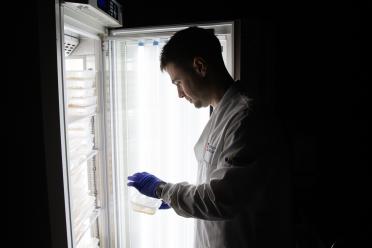
Jonathan Ashworth, NRPDTP-ARIES PhD Researcher in the De Vega Group at the Earlham Institute
BNG, which began rolling out in February, means every proposal for development over nine dwellings needs to demonstrate a measurable 10 per cent increase in biodiversity - preferably on site - following completion.
Before any development begins, both existing and proposed biodiversity must be stated. Developers are required to set a clear plan for achieving the increase, which must be approved by their local authority.
Any habitat loss can be offset through the purchase of biodiversity units, which are defined by habitat size, distinctiveness, and condition. Higher scores are given for the presence of specified indicator plants.
Jonathan Ashworth is a PhD student within the De Vega group, supported by both the BBSRC and NERC. He is concentrating on genetic bottlenecks, phenotyping, and any resulting fitness effects in the sourcing and commercialisation of native UK wildflower seeds.
The first stage involved surveying the seed stock of native flowers commercialised by major suppliers. Jonathan is using DNA barcoding and machine-learning classification of images to identify the species of each seed in a package of mixed seeds.
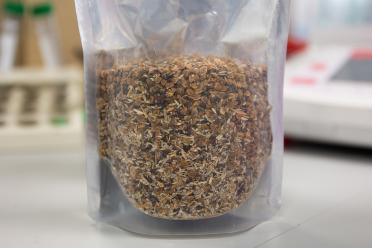
He is also estimating genetic diversity in seed stocks from different sources, with a focus on five key indicator species: yarrow (Achillea millefolium), knapweed (Centauria nigra), heal-all (Prunella vulgaris), ox-eye daisy (Leucanthemum vulgare), and lady’s bedstraw (Galium verum).
“These species are hardly studied,” he says. “It’s a big grey area and there is no regulation around the quality or diversity of wildflower seed sold in the UK.
“Intensive management could mean plants grown from seed do not have enough diversity to maintain a healthy population over time.
“The flowers need to be able to adapt to the conditions they find themselves in, especially as the climate crisis affects our country.”
His research will use genomic resources developed by the Darwin Tree of Life project.
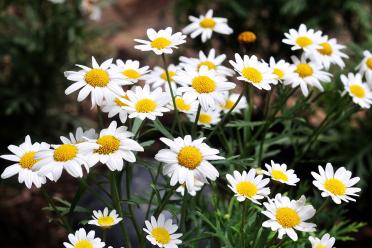

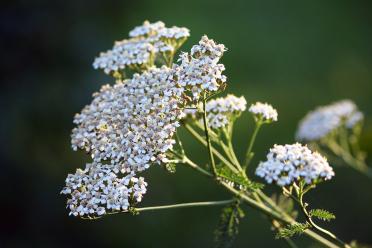
Above: Three of the wildflower species Jonathan is working with - ox-eye daisy (Leucanthemum vulgari), knapweed (Centauria nigra), and yarrow (Achillea millefolium).
Jonathan is working with the Eden Project National Wildflower Centre on the fitness of seed stock across the production life cycle.
He will be sampling as the seeds go through bulking, harvesting, drying, and cleaning processes. This is followed by sampling the final product, allowing him to compare the seeds and the effect different processes have on them - such as soil types and harvesting machinery.
He is also planning to assess the possible impact of the climate crisis on key genotypes.
“This project is designed to inform policy makers and industry leaders,” he says. “The hope is that it’ll lead to evidence-based regulation and guidance on how to produce resilient, self-sustaining populations in the enhanced ecosystems.”
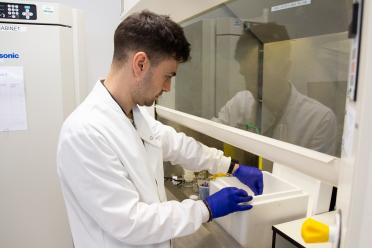
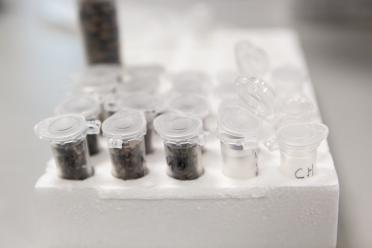

Measuring the effect of BNG on both habitats and the developers will be critical in these first few years after its introduction. Dr De Vega believes this work will be vital in supporting that assessment process.
“An objective of this project is to establish a baseline for the effects of seed bulking,” he says. “From there, we can recommend the best ways to ensure the fitness of the new habitats created.”
The Earlham Institute is open to new collaborations from seed producers and stakeholders working on BNG. To find out more, please contact the Business Development and Impact team.